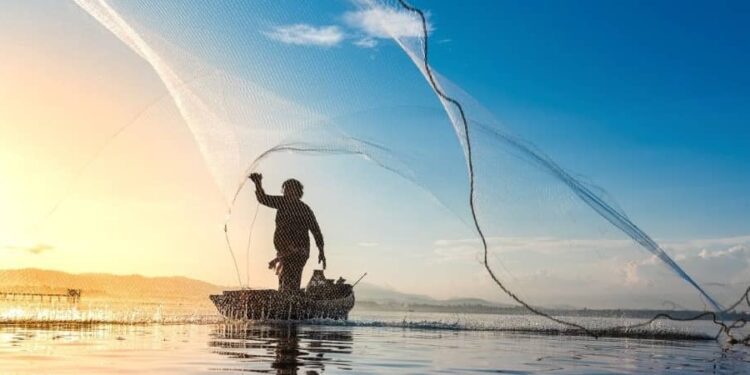Fishing has been essential to human civilization for millennia, providing sustenance and economic opportunities for coastal communities worldwide. For those with a passion for the sea and a desire to turn their love for fishing into a profitable venture, starting a fishing business on the coastline can be a dream come true. However, embarking on such a venture requires careful planning, fishing industry knowledge, and regulation adherence to ensure long-term success. This article will explore the essential points to remember when starting a fishing business on the coastline, emphasizing the importance of sustainable practices and community engagement.
Coastline Fishing Business: Key Points for Success
1. Thorough Research and Planning
Launching a fishing business on the coastline demands thorough research and meticulous planning. One must delve into the local fishing industry, studying the types of fish prevalent in the area, the fishing seasons, and the competition. Understanding the local regulations and obtaining the necessary licenses and permits is paramount to operate legally and avoid potential fines and penalties. A well-structured business plan outlining goals, target market, marketing strategies, and financial projections will serve as a roadmap for growth and sustainability.
2. Sustainable Fishing Practices
The fishing industry has recently faced increasing scrutiny over environmental concerns. Sustainable fishing practices are not only ethically responsible but also crucial for the long-term viability of the business. Overfishing can deplete fish populations, disrupt marine ecosystems, and negatively impact the coastal community’s livelihood. Anglers must adhere to catch limits, use appropriate gear to reduce bycatch and avoid fishing in protected or sensitive areas. Incorporating sustainable practices will preserve marine resources and enhance the fishing business’s reputation and marketability.
3. Selecting the Optimal Location
The success of a fishing business heavily depends on choosing the right location along the coastline. Factors to consider include:
- The availability of fish species
- Proximity to potential customers
- Accessibility to processing and distribution facilities
A location with abundant fish populations and a thriving fishing community may present more collaboration and knowledge exchange opportunities. Moreover, proximity to fish markets and restaurants allows quicker and fresher product delivery, enhancing customer satisfaction.
4. Investing in Quality Equipment and Vessel
To run a successful fishing business, investing in high-quality fishing equipment and a reliable vessel is a necessity. The type of fish targeted will determine the appropriate gear needed for the operation. Maintaining well-functioning equipment reduces downtime and improves efficiency, increasing overall productivity. A seaworthy vessel, compliant with safety regulations, ensures the crew’s safety and each fishing expedition’s success.
5. Building a Strong Brand Identity
In today’s competitive business landscape, building a solid brand identity is vital for standing out in the market. Developing a recognizable brand that emphasizes the values of sustainability, reliability, and top-quality products will attract customers seeking ethically-sourced fish. Effective marketing strategies, such as social media, local advertising, and partnerships with seafood retailers, will help create awareness and generate a loyal customer base.
6. Understanding Customer Preferences
To thrive in the fishing business, it is essential to understand the preferences and demands of the target market. Coastal communities and seafood consumers may have specific tastes and preferences, which can guide the choice of fish species to target and the best marketing approaches. Engaging with customers through surveys, feedback, and direct interactions allows the business to adapt to changing preferences and offer products that resonate with the consumers.
7. Developing a Robust Supply Chain
Establishing a reliable supply chain is crucial for the fishing business’s success. Collaborating with local fish markets, restaurants, and seafood retailers ensures a steady demand for the catch. Building solid relationships with these buyers fosters trust and loyalty, securing long-term partnerships that benefit both parties.
8. Safety and Insurance
Safety should always be a top priority in any fishing operation. Implementing safety protocols, providing crew training, and maintaining proper safety equipment on board is essential to prevent accidents and ensure the crew’s well-being. Additionally, obtaining comprehensive insurance protects the business from unforeseen risks and liabilities.
9. Staying Updated with Regulations
Fishing regulations can change, so staying updated with the latest laws and compliance requirements is crucial. Abiding by fishing quotas, size limits, and seasonal restrictions is a legal obligation and a responsible practice to preserve fish stocks and support the sustainability of the fishing industry.
10. Engaging with the Local Community
Coastal fishing businesses often rely on the support and collaboration of the local community. Engaging with the community through events, sponsorships, and partnerships fosters positive relationships and showcases the business’s commitment to sustainable practices. By actively participating in community initiatives, the fishing business can demonstrate its dedication to preserving the environment and supporting the well-being of coastal communities.
Conclusion
Starting a fishing business on the coastline is a thrilling venture that demands careful planning, adherence to regulations, and a solid commitment to sustainability. Entrepreneurs can create a thriving and ethically responsible fishing business by conducting thorough research, implementing sustainable fishing practices, and building a robust supply chain. Engaging with the local community and prioritizing safety will foster positive relationships and ensure the business’s long-term success. A fishing business on the coastline can carve out its place in the industry while preserving the marine ecosystem for future generations through passion, dedication, and a focus on providing top-quality products.












Discussion about this post